
|
Your guide to recently released books, CDs and other teaching resources. For additional reviews of French-language resources, visit Lu, vu, entendu. With the exception of some classroom sets, items reviewed are available on loan from the Margaret Wilson Library at the College. Contact Olivia Hamilton at 416-961-8800 (toll-free in Ontario 1-888-534-2222), ext 679, or e-mail library@oct.ca. |
Encouraging performance and reading
Empowering Children
Children's Rights Education as a Pathway to Citizenship
by R. Brian Howe and Katherine Covell
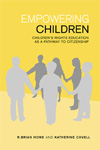 The central tenet of Empowering Children is that for children's rights to be taken seriously children need to be acknowledged as citizens.
The central tenet of Empowering Children is that for children's rights to be taken seriously children need to be acknowledged as citizens.
Children are not generally recognized as citizens in their own right. As in the citizenship literature, schools hold onto an adult-centric and exclusionary conception of citizenship in which children are seen as future or becoming-citizens rather than present or being-citizens.
For Howe and Covell, the exclusion of children from genuine civic participation inhibits the successful implementation of children's-rights education. Their research shows that educating children about their rights fosters civic leadership and personal responsibility. The authors also postulate that learning about one's rights increases respect for oneself and others. Their data underscores the importance of the democratic classroom and opportunities for critical thinking in small groups.
Advancing our understanding of children's rights and citizenship education in an ever-changing and complex world, this volume is written clearly and makes insightful connections between research, theory, policy and practice. After reviewing the international literature and addressing the views of their critics, the authors argue persuasively that children's-rights education can produce good citizens. While they believe it is the responsibility of the education system to ensure that all children are aware of their rights, they acknowledge that child participation is a multi-faceted phenomenon where family support, socio-economic status and other contextual issues play important roles.
Howe and Covell also recognize that this is not an easy undertaking and in their final chapter they identify the main challenges. In meeting these challenges, educators will need a deep moral commitment to liberal democratic values and a strong belief in the importance of mutual respect.
![]() Empowering Children, University of Toronto Press, Toronto, 2005, ISBN 0-8020-3857-3, hardcover, 245 pages, $45.00, tel 416-667-7791 or 1-800-565-9523, fax 416-667-7832 or 1-800-221-9985, publishing@utpress.utoronto.ca, www.utppublishing.com/pubstore
Empowering Children, University of Toronto Press, Toronto, 2005, ISBN 0-8020-3857-3, hardcover, 245 pages, $45.00, tel 416-667-7791 or 1-800-565-9523, fax 416-667-7832 or 1-800-221-9985, publishing@utpress.utoronto.ca, www.utppublishing.com/pubstore
Donna Koller, PhD, is an academic and clinical specialist at the Hospital for Sick Children.
Daniel Schugurensky, PhD, is a professor at OISE/UT.
 Funky Phonics
Funky Phonics
Learn to Read
by Sara Jordan
I eat bran bread with my lunch.
It's so crispy it goes crunch.
It's the brand I crave so much.
Just like crab apples it goes crunch.
Don't want crackers with my brunch.
Bring me bran bread. It goes crunch!
As Grades 1 and 2 students laughed and sang, danced and giggled their way through this song, they learned to sound out words and read.
To test this resource with real students in Kindergarten to Grade 2, I enlisted teachers who shared my belief in the importance of phonics and my aversion to making it drudgery for teachers or students. The results were exciting. Kids were focused, motivated, entertained and ultimately reading the songs.
Funky Phonics comes in four volumes, each containing 13 or 14 peppy songs in a 45-page, large-print songbook, plus an audio CD based on what Jordan calls the synthetic phonics approach. Each volume comes with a resource book that has clear, reproducible worksheets for students and activities that reinforce the sounds being taught.
All the volumes list frequently occurring words and present the elements of phonics in a logical plan. Volume 1 (Kindergarten to Grade 1) introduces short vowels and the consonants. Volume 2 (Kindergarten to Grade 1) reviews skills and adds long vowels, y as a vowel and the consonant blends. Volume 3 (Grades 1 to 2) employs danceable songs to introduce blends, digraphs and dipthongs. Volume 4 (Grades 1 to 2) concludes with teacher-controlled vowels (ir, ar, ur, or, er) and more blends.
While many of the activities are not new, Funky Phonics links them with songs, sounds and catchy rhymes. Teachers can create similar activities for teaching phonics, but the time required to amass the songs, songbooks, student activities and teaching tools here would be astronomical.
This is an excellent and entertaining resource for teaching and learning.
![]() Funky Phonics (four volumes, each including a CD, songbook and resource book), Jordan Music Productions, Toronto, 2004, ISBN 1-55384-022-5, each volume $29.95, tel 905-938-5050 or 1-800-567-7733, fax 905-938-9970 or 1-800-229-3855, sjordan@sara-jordan.com, www.sara-jordan.com.
Funky Phonics (four volumes, each including a CD, songbook and resource book), Jordan Music Productions, Toronto, 2004, ISBN 1-55384-022-5, each volume $29.95, tel 905-938-5050 or 1-800-567-7733, fax 905-938-9970 or 1-800-229-3855, sjordan@sara-jordan.com, www.sara-jordan.com.
Gail Lennon teaches distance-education online secondary courses for adults with the Bluewater DSB.
Kristen Dinsmore, a student-teacher at Althouse Faculty of Education in London, along with two colleagues, field-tested the materials in primary grades in London schools.
Graduation for All
A Practical Guide to Decreasing School Dropout
by Camilla Lehr, Ann Clapper and Martha Thurlow
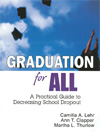 Although Graduation for All is written as a response to secondary school reform in the US, it is a must-read handbook for student-success teachers in Ontario.
Although Graduation for All is written as a response to secondary school reform in the US, it is a must-read handbook for student-success teachers in Ontario.
Chapters 1 and 2 lay out the basics for getting the planning process started. Chapters 3 through 5 address the challenges of acquiring accurate dropout statistics and the specific factors that may be associated with completion rates in a particular school or school district. Guidance on how to analyze existing programs and services, how to identify the specific needs of a school or district, and how to construct a plan of action is found in Chapters 6 through 8. Finally, Chapters 9 and 10 lead the reader through a step-by-step process for implementing the action plan and determining its effectiveness.
Tools (graphic organizers) are provided for each task. Additional resources are listed at the end of each chapter and in the appendix. But the manual does not provide strategies for identifying intervention models and programs that have proven effective. Although related links in the appendix serve as a starting point for this kind of search, a chapter providing the necessary tools for an educational literature review would be useful.
Graduation for All is nonetheless a useful resource for those who wish to prevent students from dropping out before graduation. It details a manageable approach to understanding the issues and exploring solutions, and provides practical tools to evaluate the effectiveness of current programs. This handbook is an excellent starting point for teachers who find themselves daunted by the task of improving student success rates in their assigned schools.
![]() Graduation for All, Corwin Press, Thousand Oaks, California, 2005, ISBN 1-4129-0627-X, softcover, 272 pages, US$39.95, tel 1-800-818-7243, fax 1-800-417-2466, www.corwinpress.com
Graduation for All, Corwin Press, Thousand Oaks, California, 2005, ISBN 1-4129-0627-X, softcover, 272 pages, US$39.95, tel 1-800-818-7243, fax 1-800-417-2466, www.corwinpress.com
Anne Arthur is an alternative-education student-success administrator in the Greater Essex County DSB and a PhD Candidate at the Faculty of Education, University of Windsor.
Teacher Man
A Memoir
by Frank McCourt
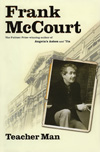 Frank McCourt, that affable raconteur, has returned. Those who read and admired McCourt's triumph over an impoverished Irish upbringing in Angela's Ashes will welcome this reflection on three decades of teaching in New York. McCourt has instructed at least 33,000 classes and some 12,000 students. He reflects, "Instead of teaching, I told stories. Anything to keep them quiet and in their seats." And it is McCourt's stories that interest: like the flying sandwich that lands at his feet, like Paulie's mother who complains about the uselessness of learning words like "usufruct."
Frank McCourt, that affable raconteur, has returned. Those who read and admired McCourt's triumph over an impoverished Irish upbringing in Angela's Ashes will welcome this reflection on three decades of teaching in New York. McCourt has instructed at least 33,000 classes and some 12,000 students. He reflects, "Instead of teaching, I told stories. Anything to keep them quiet and in their seats." And it is McCourt's stories that interest: like the flying sandwich that lands at his feet, like Paulie's mother who complains about the uselessness of learning words like "usufruct."
It's not that some of his assignments (write an excuse note for Al Capone) aren't clever, or that orchestrating the reading of recipes to music isn't fun, but there is more to school than menus and the telling of tales. In a bar, we might hoist a glass and encourage McCourt's storytelling, but as an educator, he falls short. The careless rambling quality of his lessons and his description of evaluation will only confirm some parents' worst fears, and there is little sense of a desire to offer support or compassion to his students.
We recognize the truth in McCourt's stories of rowdy, disruptive students, hostile parents and immovable administrations, along with superintendents who identify a truly inspired lesson. Yet, for me, Teacher Man is not a story about communicating with kids, but rather about Angela's son, who uses stories as protective armour. Reading McCourt's stories is a pleasure; however, I worry when reviewers write that Teacher Man "should be mandatory reading for every teacher."
![]() Teacher Man, Scribner, New York, 2005, ISBN 07432-4377-3, hardcover, 258 pages, $36.00, tel 905-943-9942 or 1-800-387-0446, fax 905-943-9026, info@simonandschuster.ca, www.simonsays.com.
Teacher Man, Scribner, New York, 2005, ISBN 07432-4377-3, hardcover, 258 pages, $36.00, tel 905-943-9942 or 1-800-387-0446, fax 905-943-9026, info@simonandschuster.ca, www.simonsays.com.
Patricia F. Goldblatt is a program officer in the Standards of Practice Unit at the Ontario College of Teachers.
I Am a Pencil
A Teacher, His Kids, and Their World of Stories
by Sam Swope
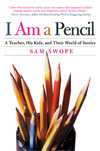 During a fallow period, children's author Sam Swope accepted a ten-day writing project with a multicultural Grade 3 class in Queen's. Then, intrigued by the possibilities, he arranged to teach the students for three successive years and wrote a book about it.
During a fallow period, children's author Sam Swope accepted a ten-day writing project with a multicultural Grade 3 class in Queen's. Then, intrigued by the possibilities, he arranged to teach the students for three successive years and wrote a book about it.
Swope had few illusions about his native abilities as a teacher. He prepared himself for his role and the reader profits from it. The book is brimming with references to noted theorists. Swope looks at how they taught children to write poetry and prose and shows how he used their ideas. He also proves to be an avid and appreciative reader of poetry and children's literature. Happily, many of the poems cited are readily available on the Internet, and the novels can be found at most schools.
From the teacher's perspective, the main appeal of this book is found in the three writing projects Swope attempted with the children – the box, the island and the tree – all designed to spark writing. For the island project the students researched islands and shared their papers and books, stories and poems. They outlined each other in imaginative poses on tracing paper, created grids and reduced the dimensions to fit on letter-size paper. Next, Swope had them draw their ideal islands. Then, with awakened minds, they wrote. And they wrote well.
Because Swope is a writer first, meticulous in his observations and scrupulously honest, this is a book for the heart. This is a book about children, their lives and their writing. This is a book about living without defences and with mind and heart engaged, in contemplation of the ineluctable joys and sorrows of teaching, the deep mysteries of learning and the heartbreaking lives of children.
It is a testament to the teacher and a text for the non-teacher about why teaching is so important.
![]() I Am a Pencil, Henry Holt and Company, New York, 2005, ISBN 0-8050-7851-7, softcover, 292 pages, $19.95, distributed in Canada by H.B. Fenn, tel 905-951-6600 or 1-800-267-3366, fax 905-951-6601 or 1-800-465-3422, sales@hbfenn.com, www.hbfenn.com.
I Am a Pencil, Henry Holt and Company, New York, 2005, ISBN 0-8050-7851-7, softcover, 292 pages, $19.95, distributed in Canada by H.B. Fenn, tel 905-951-6600 or 1-800-267-3366, fax 905-951-6601 or 1-800-465-3422, sales@hbfenn.com, www.hbfenn.com.
Fred DuVal is a bilingual accreditation program officer at the College.
What Good Readers Do
Seven Steps to Better Reading
by Graham Foster
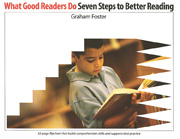 What is most interesting about What Good Readers Do is its flip-chart format. While the topic of building comprehension skills is not new, the presentation is quite novel – lending itself to a quick look at best practices for teachers and students alike. It shows ways to become a proficient, critical reader by focusing on specific strategies for reading purposefully and skilfully.
What is most interesting about What Good Readers Do is its flip-chart format. While the topic of building comprehension skills is not new, the presentation is quite novel – lending itself to a quick look at best practices for teachers and students alike. It shows ways to become a proficient, critical reader by focusing on specific strategies for reading purposefully and skilfully.
The reader is guided through seven essential strategies: Why Read, Pre-Reading, During Reading, Checking Understanding, Close Reading, Thinking about Text and Extending Text.
This little flip chart packs a lot of content into its 32 pages, including reproducibles. Educators will recognize a bank of strategies that come from Bloom's Taxonomy, Gardener's Multiple Intelligence, Ministry documents and a host of literacy gurus. However, 32 pages have limitations, and for in-depth understanding and comprehension strategies I would suggest wider research.
![]() What Good Readers Do, Pembroke Publishers Limited, Markham, 2005, ISBN 1-55138-189-3, softcover, 32-page flip chart, $12.95, tel 905-477-0650, fax 905-477-369, www.pembrokepublishers.com
What Good Readers Do, Pembroke Publishers Limited, Markham, 2005, ISBN 1-55138-189-3, softcover, 32-page flip chart, $12.95, tel 905-477-0650, fax 905-477-369, www.pembrokepublishers.com
Anjana Thom is an early literacy teacher with the Peel DSB.
The Nature Treasury
A First Look at the Natural World
by Lizann Flatt, illustrated by Alan Cormack and Deborah Drew-Brook
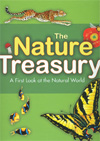 This book, intended for Primary/Junior science, is a wonderful collection of information and illustrations on all things natural. It is a reference book but also includes engaging activity pages asking students to search for particular plants and animals in a picture. It has beautiful illustrations and its large-format, full-colour pictures and well-placed readings are sure to entice the budding naturalist.
This book, intended for Primary/Junior science, is a wonderful collection of information and illustrations on all things natural. It is a reference book but also includes engaging activity pages asking students to search for particular plants and animals in a picture. It has beautiful illustrations and its large-format, full-colour pictures and well-placed readings are sure to entice the budding naturalist.
Topics range from soil, air, water, trees, grass, forests, rainforests, prairies, savanna, tundra and deserts to lakes, rivers, oceans and reefs. There are detailed illustrations of various ecosystems and biomes from around the world.
This informative and engaging book covers numerous food chains – aquatic and terrestrial – and the life cycles of various plants and animals, including butterflies, mice, ferns and milkweed. It has clear and concise sections on the classification of plants and animals and includes a glossary of terms. Comprehensive and accessible, The Nature Treasury would be a valuable resource and reference for any elementary science classroom.
![]() The Nature Treasury, Maple Tree Press, Toronto, 2005, ISBN 1-897066-44-2, hardcover, 44 pages, $19.95, Raincoast Books, tel 604-323-7100, fax 604-323-2600, www.raincoast.com
The Nature Treasury, Maple Tree Press, Toronto, 2005, ISBN 1-897066-44-2, hardcover, 44 pages, $19.95, Raincoast Books, tel 604-323-7100, fax 604-323-2600, www.raincoast.com
Rhea Krause is on maternity leave from her position as department leader of science at Barrie Central Collegiate in the Simcoe County DSB.
Infotext
Reading and Learning
by Karen M. Feathers
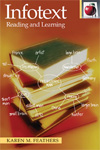 Feathers defines infotexts as the books, textbooks, journals, newspapers and computer manuals that we read to gather information about particular topics. She shows how teachers can help elementary and secondary students make sense of them, but also stresses the importance of teaching strategies that will help students become responsible for their own learning.
Feathers defines infotexts as the books, textbooks, journals, newspapers and computer manuals that we read to gather information about particular topics. She shows how teachers can help elementary and secondary students make sense of them, but also stresses the importance of teaching strategies that will help students become responsible for their own learning.
Feathers makes a compelling argument: that expository text, in reading research and classroom practice, has become the neglected sister to narrative. She provides a set of strategies to counter this. There is little in her discussion that is novel, and anyone interested in reading methodology will be aware of the issues. But this book provides a succinct account of them and outlines how to apply them.
This is definitely the book for the classroom teacher who wants to help kids read and has time to learn the practice, if not the theory.
![]() Infotext, Pippin Publishing, Don Mills, 2004, ISBN 0-88751-076-0, softcover, 161 pages, $22.00, distributed by University of Toronto Press, tel 416-667-7791 or 1-800-565-9523, fax 416-667-7832 or 1-800-221-9985, utpbooks@utpress.utoronto.ca, www.pippinpub.com.
Infotext, Pippin Publishing, Don Mills, 2004, ISBN 0-88751-076-0, softcover, 161 pages, $22.00, distributed by University of Toronto Press, tel 416-667-7791 or 1-800-565-9523, fax 416-667-7832 or 1-800-221-9985, utpbooks@utpress.utoronto.ca, www.pippinpub.com.
Fred DuVal is a bilingual accreditation program officer at the College.
FROM FAMILIAR SERIES
Crabtree Publishing adds titles.
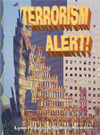
Disaster Alert!
Four new titles
![]() Tsunami Alert, Terrorism Alert, Space Disaster and Meteorite Alert, Transportation Disaster Alert!, each 32 pages, softcover $9.86, hardcover $20.76
Tsunami Alert, Terrorism Alert, Space Disaster and Meteorite Alert, Transportation Disaster Alert!, each 32 pages, softcover $9.86, hardcover $20.76
Medieval World
Six new titles
![]() Medieval Myths, Legends and Songs, Medieval Medicine and the Plague, Medieval Projects You Can Do!, Medieval Law and Punishment, Manners and Customs in the Middle Ages, Famous People of the Middle Ages, each 32 pages, softcover $9.86, hardcover $20.76
Medieval Myths, Legends and Songs, Medieval Medicine and the Plague, Medieval Projects You Can Do!, Medieval Law and Punishment, Manners and Customs in the Middle Ages, Famous People of the Middle Ages, each 32 pages, softcover $9.86, hardcover $20.76
Go Bananas
Yellow, Red and Blue
![]() Four new titles in each of Red, Yellow and Blue Bananas, each 48 pages, softcover $7.16, hardcover $18.36
Four new titles in each of Red, Yellow and Blue Bananas, each 48 pages, softcover $7.16, hardcover $18.36
Crabtree Publishing Company, St. Catharines, tel 905-682-5221 or 1-800-387-7650, fax 905-682-7166 or 1-800-355-7166, orders@crabtreebooks.com, www.crabtreebooks.com.
 There are two new Sing Out CDs.
There are two new Sing Out CDs.
Sing Out Summer Fun (CD)
In the Canadian Children's Book Centre guide
![]() 2003, MLPCD-1027, $15.99
2003, MLPCD-1027, $15.99
Sing Out Kids' Safety (CD)
This CD won the prestigious iParenting Media Award, USA
![]() 2004, MLPCD-1217, $15.99
2004, MLPCD-1217, $15.99
Mary Lambert Music, tel 613-549-8049 or 1-866-783-7475, fax 613-549-8743, mary@marylambertmusic.com, www.marylambertmusic.com. Mary Lambert is available to perform this music in interactive shows at your school.








